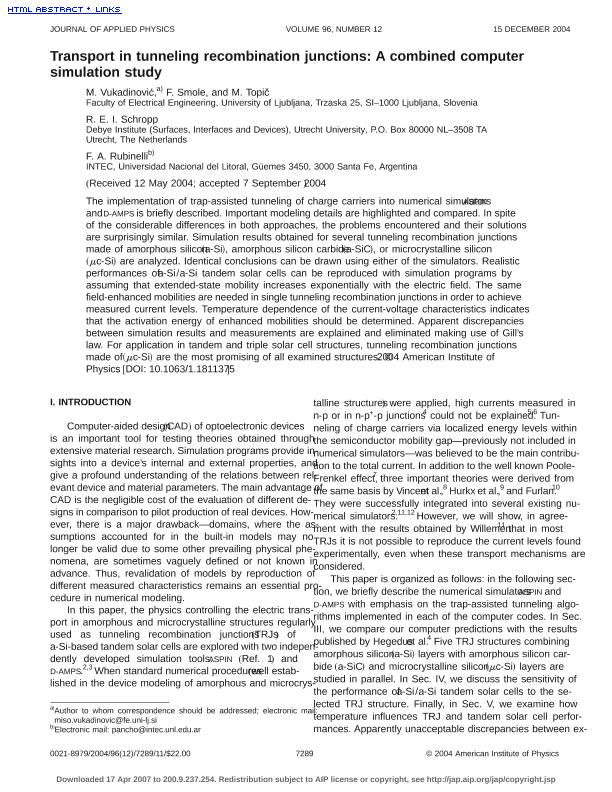Artículo
Transport in tunnelling recombination junctions: a combined computer simulation study
Fecha de publicación:
09/2004
Editorial:
American Institute of Physics
Revista:
Journal of Applied Physics
ISSN:
0021-8979
Idioma:
Inglés
Tipo de recurso:
Artículo publicado
Clasificación temática:
Resumen
The implementation of trap-assisted tunneling of charge carriers into numerical simulators ASPIN and D-AMPS is briefly described. Important modeling details are highlighted and compared. In spite of the considerable differences in both approaches, the problems encountered and their solutions are surprisingly similar. Simulation results obtained for several tunneling recombination junctions made of amorphous silicon (a-Si), amorphous silicon carbide (a-SiC), or microcrystalline silicon (µc-Si) are analyzed. Identical conclusions can be drawn using either of the simulators. Realistic performances of a-Si/a-Si tandem solar cells can be reproduced with simulation programs by assuming that extended-state mobility increases exponentially with the electric field. The same field-enhanced mobilities are needed in single tunneling recombination junctions in order to achieve measured current levels. Temperature dependence of the current-voltage characteristics indicates that the activation energy of enhanced mobilities should be determined. Apparent discrepancies between simulation results and measurements are explained and eliminated making use of Gill’s law. For application in tandem and triple solar cell structures, tunneling recombination junctions made of (µc-Si) are the most promising of all examined structures.
Palabras clave:
Tandem Solar Cells
,
Recombination Junctions
,
Modelling
,
Electrical Transport
Archivos asociados
Licencia
Identificadores
Colecciones
Articulos(INTEC)
Articulos de INST.DE DES.TECNOL.PARA LA IND.QUIMICA (I)
Articulos de INST.DE DES.TECNOL.PARA LA IND.QUIMICA (I)
Citación
Vukadinovic, M.; Smole, F.; Topič, M.; Schropp, R. E. .; Rubinelli, Francisco Alberto; Transport in tunnelling recombination junctions: a combined computer simulation study; American Institute of Physics; Journal of Applied Physics; 96; 12; 9-2004; 7289-7299
Compartir
Altmétricas




